Lock Blog
A resource for consumers, locksmiths, and security professionals
A resource for consumers, locksmiths, and security professionals
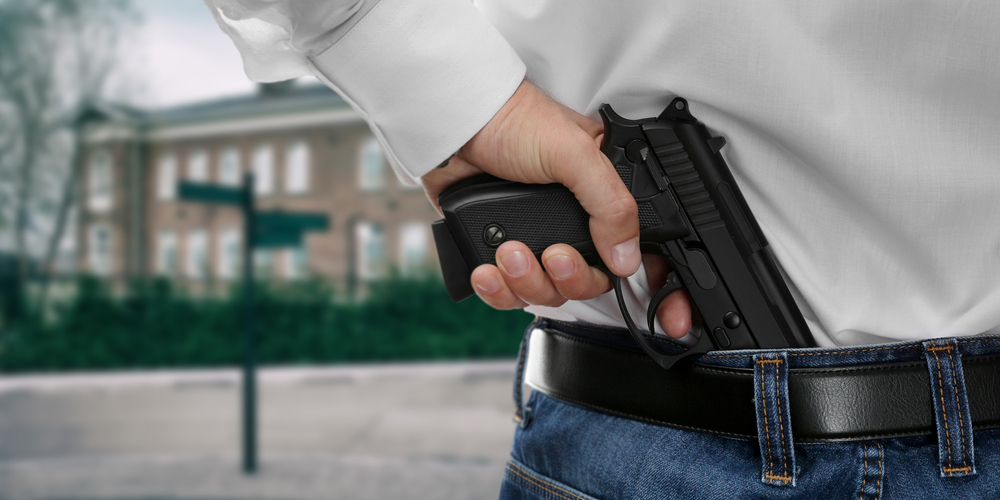
School shootings are starting to be a staple of the academic year. It is the sad and unfortunate truth that this must be a real concern for students and guardians alike. If you are a student or are in the position to educate a student about school safety, then you have a responsibility to do so. These instances of severe violence are no laughing matter, and the unpredictability of these tragedies demands a lot of consideration. In order to be safe while an active shooter is on campus, there is some preparation you need to do. Then, using the information you have, you will need to decide to either hide or get out.

The best part of schools is the shoe dress code. Almost every school enforces the rule that students must wear closed toed shoes. This is not the case for many universities, as they see their college students are seen as adults (for the most part) and can wear whatever they please. In any case, it is important for shoes to be practical. And when I talk about a practical shoe, I mean one that you can run, jump and move around in, without hurting your foot or losing your shoe. High heel and platform shoes are examples of dress shoes, which may be allowed via the dress code, but are still impractical.
Without the appropriate footwear, you run the risk of being injured. Broken glass from windows blown out by bullets, or smashed out by escaping students, will lead to injured feet (see Die Hard). With cuts or broken glass in your feet, you run the risk of encumbered movement. The same is true if you attempt to run in heels or shoes with other means of elevation. Ultimately you may end up taking off these shoes, and then you run the risk of stepping on something harmful.
Some college campuses do not restrict students from carrying firearms, but in high-school, middle school, and elementary, this is not the case. A student cannot be armed, even if they are trained and possess the maturity to handle the weapon responsibly. And because life does not always let you carry your gun, it is better that you learn to think of everything as a weapon. A pen is a weapon. A chair is a weapon. Anything sharp, and anything heavy can be used to defend yourself.
You are never without a weapon even when you are without a weapon. With martial arts and defense training, a student can stand up to most foes. Hopefully, it does not come to a face to face confrontation with the assailant, but if it does, a formidable offense may mean the difference between life and death. If nothing else, this type of training will give a student some peace of mind, and allow them to respond to the prospect of an active shooter, instead of finding themselves immobilized by fear.
In the event of a school shooting, there are going to be failures in the leadership of the school. It happens every single time. It may be a failure on a very high level, such as the administration, or it could be as low as a student stranded outside while coming back from the restroom. When I was in school, I had a teacher keep us inside even though the emergency alarm was ringing. He kept saying that it was probably a false alarm and continued to teach. There had been a fire, and we did not prepare for it at all. Luckily nothing happened, but other teachers made the same mistake. There was no scheduled emergency drill, so no one reacted.
A student must be given a proper education in safety so that their security can be placed in their own hands. By taking charge of this education, you can influence the only person that matters in keeping a student safe, the student. Leaving something like this up to strangers puts a student at undue risk of bodily harm. Just as education is needed to help prepare you for the future, an education in security prepares you for future threats.
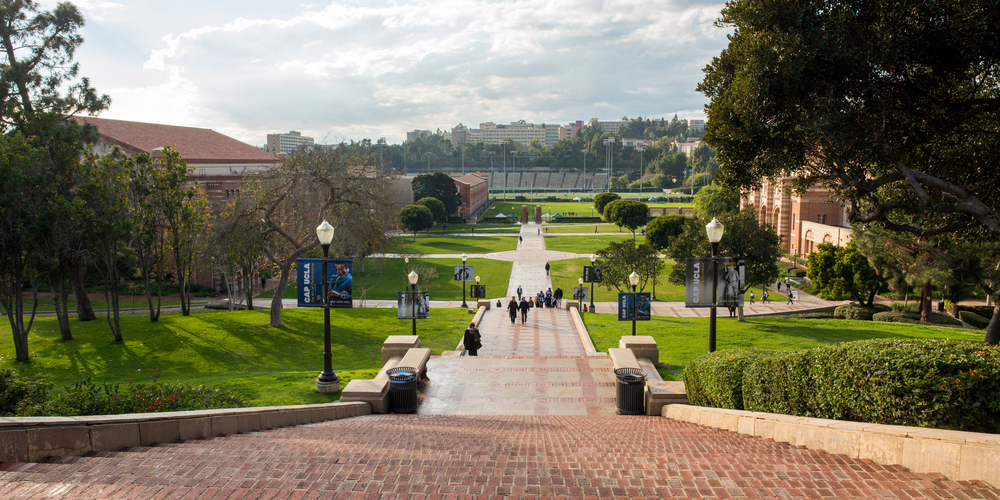
The most important information that you are going to get during a school shooting is what you see. Visual confirmation is your strongest resource. Remember what you see, and try and take note of when you saw it. If you see the shooter, knowing where and when you saw them last, and the direction of their movement is very important. This is valuable information to give others and can help you decide the best course of action: whether it is safer to run or hide.
Hearing something is useful in some instances. If someone is close by, or information is being shared at an audible volume, you can take this into account. Just always be aware of how this information may be misleading. Sounds can appear farther away or closer depending on how loud they are and the acoustics of the area. Even the direction of the noise seemed to come from could be wrong. If you cannot see it, approach using the information with greater skepticism. Only use this information in desperation, or if it is corroborated by something you have seen.
The information you get from other is the most untrustworthy of all. In the best of times it is information that other people are recalling, and in the worst cases, it is hearsay. First-hand accounts need to be interrogated because you do not know the mental state of the person who is recalling the information. When someone is relaying something that they heard, treat that information with extreme prejudice. At the point of getting information third hand, you are playing telephone. The person bringing you the information could have misheard the information, misremembered, and the information they got may not have been true. Do not make decisions based off of this type of intel.
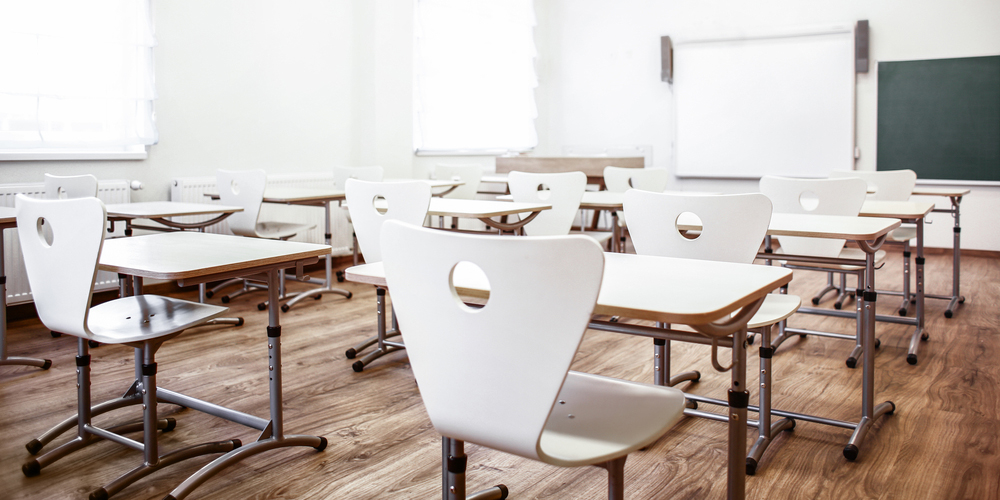
When you make up your mind to hide, you cannot be moving around. This means no moving around inside where you have chosen to hide, and no moving to a different hiding location. If you are going to move locations, you must try to escape. Opening yourself to discovery by leaving your hiding place puts you, and everyone in both locations, at risk. If you are hiding, you are not to move until you can get out of the danger zone entirely.
Sometimes in classroom lockdowns, getting others to stop moving about can be difficult. They may want to look around. Some may simply pace as a result of nerves. Walking makes a sound. Movement can reveal shadows. Those looking to peak their heads out can simply just be seen.
One of the most important aspects of hiding is remaining completely quiet. Whether you are by yourself or with others, the hiding spot must have pin drop silence. The purpose of hiding is so the shooter does not know you are there. You are giving the appearance that the area where you are hiding is abandoned. If the room is secure and absolutely silent, there is no reason for them to come in.
A common cause of noise is communication, either on the phone, to people within the room, or to people in nearby rooms. This type of interaction can be highly beneficial is putting people at ease, assisting law enforcement, gathering information, etc., but it should be handled with care. There is not much that most school doors can do against bullets. Even with a locked door, bullet penetration can cause physical harm to those hiding on the other side.
The look of your hiding space has to scream abandoned. Turn off all the lights, but do not turn off all the lights if the shooter is nearby. Get the room to a set point of appearing empty and then stay put and stay quiet. You do not want the status of the room changing because that will draw attention. Ideally, lights should be off, just because this will make it harder for the shooter to see what is inside the room. Blinds should be drawn so that there is no way to see inside the room from outside of the building.
Once you are hiding, you still need to find cover. The purpose of the cover should be to protect you against explosions, shrapnel, and bullets. Tables, chairs, doors, and walls are not adequate to cover, but they are better than nothing. These may obscure where you are, but they will not stop most bullets. Obscuring yourself from their line of sight is a good start, but you need more permanent cover. If a 22mm bullet will fully penetrate the metal door of a car, a few layers of wood and drywall is not going to do much. What you need is to get yourself completely behind a material that is strong enough to deflect high-velocity metal. You cannot assume what type of bullets are being used, or guess that they do not have explosives.
Outside of the buildings, brick, concrete, telephone poles, street light posts, dumpsters (behind, not inside), etc. can be good cover. If you must take cover behind a car, do so near the engine block, as the rest of the car is not strong enough to stop any projectiles. Inside the school itself, thick books make for very good bulletproofing. There may be books inside the classroom, or if you are in the library, this will be very useful. Sturdy and thick desks in lab rooms, shop, and home economics classrooms will also be very good cover.
In the case of the UCLA shooting, many students were surprised to find that there was no way to lock the doors to their classrooms. And this will also be the case for many high schools, elementary schools, etc. If the students are left alone without the teacher, there will be no way to lock the door in a traditional sense. That is not to say that you cannot secure your location, it just forces you to get industrious. Of course, if you can lock the door this is the best starting point, but you may want to do more, just to be safe. But you do not know if the shooter has access to room keys or master keys.
For barricades, heavier is always better. Some people want to get more industrious with their barricades, but you should always stay as practical as possible to save on time. Tension and prop based methods of securing the doors are fine if they are the only option, but do not overthink it. Also, realize that any makeshift lock for the door may raise suspicions from the shooter to whether people are inside that room, and keep noise to a minimum while setting these things up. And even though you may give away that you are in the room by doing this, it is still better to take this precaution than to go without it. The shooter is likely to get frustrated and leave if you have secured the room properly. Just be very careful while exiting, as booby traps may have been left behind.
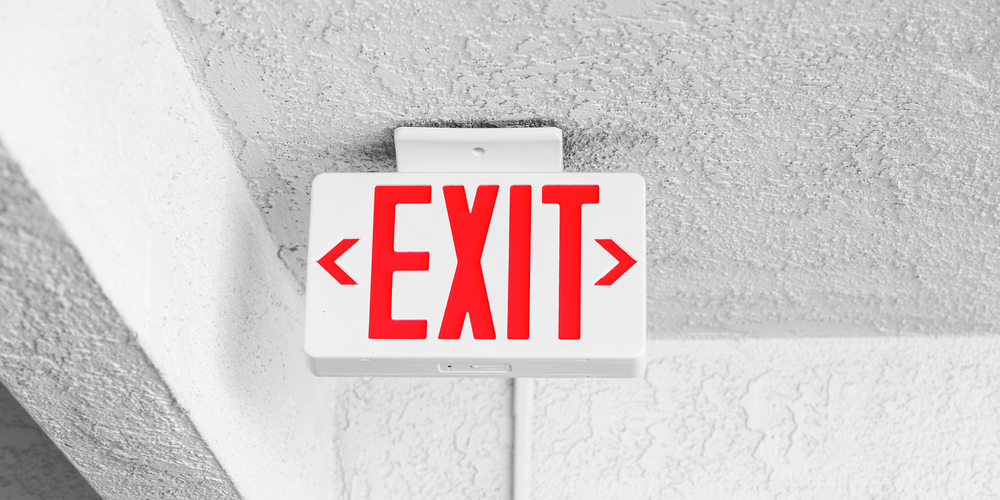
When you are fleeing from an active shooter, the fastest exists are the exits. Because this is an emergency, you want to go with the emergency exits. Any emergency exit is guaranteed to lead directly out of the building. These may sound an alarm which contacts emergency services, and that is also something that you want. The most ideal exits are doors with panic bars. These allow you to simply push the door open, whereas something with a handle requires you to break your stride, turn the handle and then push. You will lose your speed and become a stationary target as you stand in front of the door. Use traditional exits whenever you can, but do not let using them put you at risk of physical harm.
Any hole or fragile barrier is a potential exit. When you need to leave, you have to get out any way you can. When you are breaking glass, look away. That means turning your head as you strike the glass. Try to use a heavy object to break the glass, and refrain from attempting to break the glass with your hand. If you must use your hand, make sure that it is covered with a shirt or jacket. Break out all of the glass that is around the edges, especially the shards at the bottom of the window. If you can climb out, that is ideal. Make a rope out of clothing or other materials that you have, or perhaps scale down the side of the building with your hands. I do not recommend just jumping for it, but if it means the difference between living and dying, make sure you know how to fall.
When you fall, try your best to land on your back with your head pulled up so that your chin is touching your chest. Stretch your arms out by your sides, hands open, palms toward the ground, and try to land legs first, leaning back, as you connect with the grown. This will reduce the damage of the fall as much as possible. Of course landing on grass or in bushes is much better than concrete, and the higher up you are the worse off your landing will be. By the fourth story, you should most likely not consider jumping.
Making the choice between moving as fast as possible will come at the expense of moving as discreetly as possible. I will always recommend the speed of movement over stealth during an escape. In the case of a shooter, the farther away you are the less likely you are to be shot. If you are right by the shooter, bob and weave while continuing to run as fast as you can away. If the shooter chases you, this is better. Taking aim while running means they have a significantly lower risk of hitting you. (If you were hit it would be almost complete coincidence, as the shooter has no accuracy while running and shooting).
If you do not see the shooter, running is still a great option when you are escaping. Trying to get out without making a sound is only really worthwhile if you are trying to line yourself up better to have a straight shot at an exit. Once you are in the process of getting to an exit, speed is your greatest ally.
A trend in the education system has been that students are forced to carry one set of books to and from school. These types of overpacked loads cannot be taken with the student if there is any need for a quick escape. It is best to run with the lightest load possible. Bags, backpacks, and even items in your hands will decrease your speed and make it more difficult for you to maneuver. Leave what you can behind. Essential items and small objects that fit in your pocket only. If you would have to carry an injured person, it is probably best to not move them and stay put. Improperly moving someone with an injury may worsen their condition, and will slow you down considerably. Speed is your best defense if you encounter the shooter. Giving up this method of protection is potentially life threatening.
Once have encountered law enforcement, you must stop what you are doing and comply with their instructions. The officers that you see may not know that you are not the gunman or another shooter. They need to clear you before they can give you any assistance. Unfortunately, in these types of high-stress situations, mistakes can be made. Good guys can look like bad guys. The best thing for your safety is to respect the authority of the officers and work with them. You may be upset at the insinuation that you are a suspect, but you have to approach the confrontation with some level of empathy. A failure to see the stress and confusion of law enforcement will make it all too easy for them to react improperly. Be on your best behavior, and remember that you are interacting with human beings who have feelings.
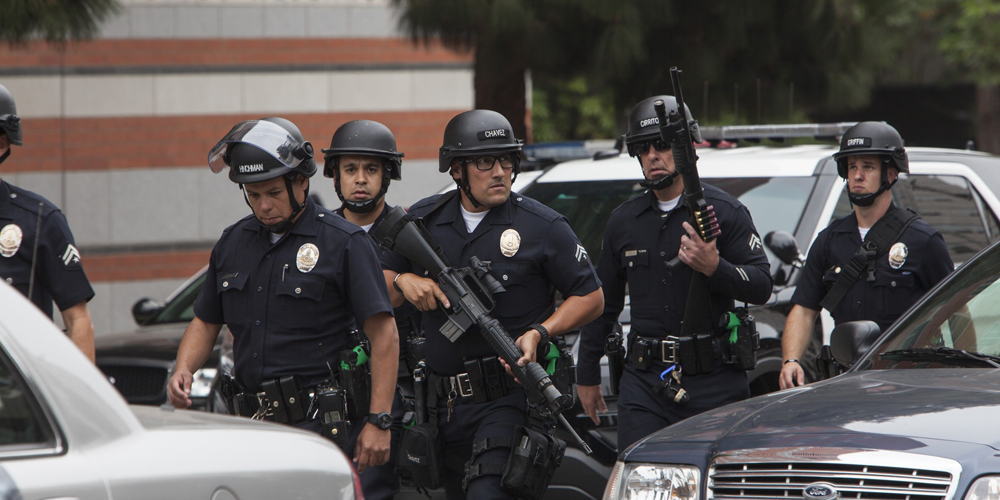
Once you escape, or if you have hidden away, reach out to the authorities and give them all the information you can. Make sure that you are not putting yourself at risk by having a conversation. Keep noise to a minimum. The information that you want to give is your location, how many people you are with, and where and when you saw the shooter (if you indeed did see the shooter). If anyone is injured, give them as much information as you have about the wound and the status of the injured person. Tell them where the wound is on the body. If it is bleeding, is it bleeding a lot? Is the bleeding slowing after you treated it? If you treated it, what did you do? Are they conscious? This will help first responders with knowing what to expect when they reach you.
There is nothing worse than speculating on your situation during an emergency. This information is at best irrelevant, and at worst misleading. If the sentence begins with “I think” then do not say anything. Stick to what you know. If you are prompted with a question, do not give them an answer containing “I think”. When the sentence is “I think” the answer is “I don’t know”. This does not mean that you can’t give them some information, or that they have to drag everything out of you.
If you are asked, “Do you know where the shooter is?” do not tell them your thoughts, explain the reasoning for your thinking without editorializing. For example, you think the shooter is on the second floor. But that is because you saw the shooter go into the stairwell and then heard shooting above you. That happened 5 minutes ago. Leave out what you think, and stick to what you saw and what you heard. No speculation just observation.
Only ask for information if you are still in possible danger. If you have already escaped, give them all the information you have and then clear the line. It is important that you do not ask questions where you are looking for agreement. Only ask questions that you do not have an answer to. For example, if you have made up your mind that you are going to make a run for and exit or escape out a window, do not ask what you should do. You may need to know how to secure a door with materials you have around you. You may need some medical advice if someone is injured. If you honestly do not know whether you should run or stay hidden, ask for advice. Do not stay on the phone longer than you need to, and do not ask for information that you cannot use, or will not use.
The operator or officer may not like your plan, but your survival is in your own hands. I cannot tell you to do what someone else is asking you to do because I don’t know what the ideas are, or what the situation is. All I know is that you are going to do what you are going to do. What is important is that you do not misinform the authorities of your intentions. They may be running an operation in your area, or have knowledge that you don’t, which they aren’t willing to give you. But what they do have are men and women with guns, that need to not have their finger off the trigger when you come bursting out of a building running as fast as you can.
When they know what you are going to do, they have to take steps to deal with it. If you can, give them some type of time frame. That you will do X in Y minutes. This will give the relevant parties some heads up. In the case where you were not talking to someone who knew exactly what is happening on the ground, they will have some time to contact whoever is taking the lead. Do not count on them to be able to rescue you, but believe them when they say they are trying.
When it comes down to survival, there is really only one person that can save you. That responsibility is solely up to you. The moment that you leave your well being up to others, is the instant that you no longer influence your fate. Preparation does not mean being paralyzed by fear, and it does not mean being paranoid. Being prepared means having a plan and what it takes to see your plan through. Know how to use the information around you, and what to be aware of in terms of bad intel. From there, it is up to you what will make you safer. Hiding and getting out are your choices. No matter what others say, you will need to make the decision of what to do in this emergency. And always be sure to contact the authorities they are a resource, but they also need information from you. Be prepared, be smart, be helpful, and survive.
Category: Crime, Safety & Security